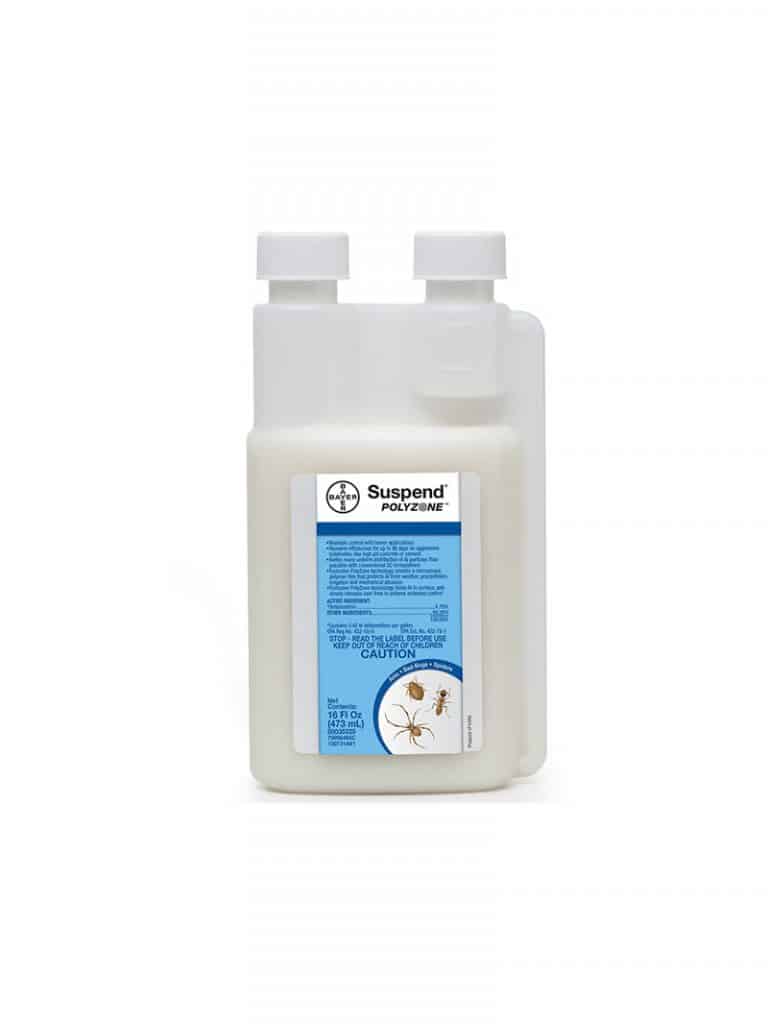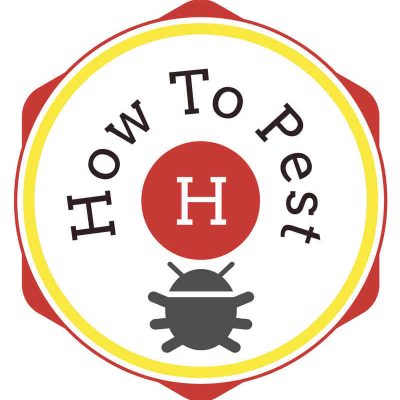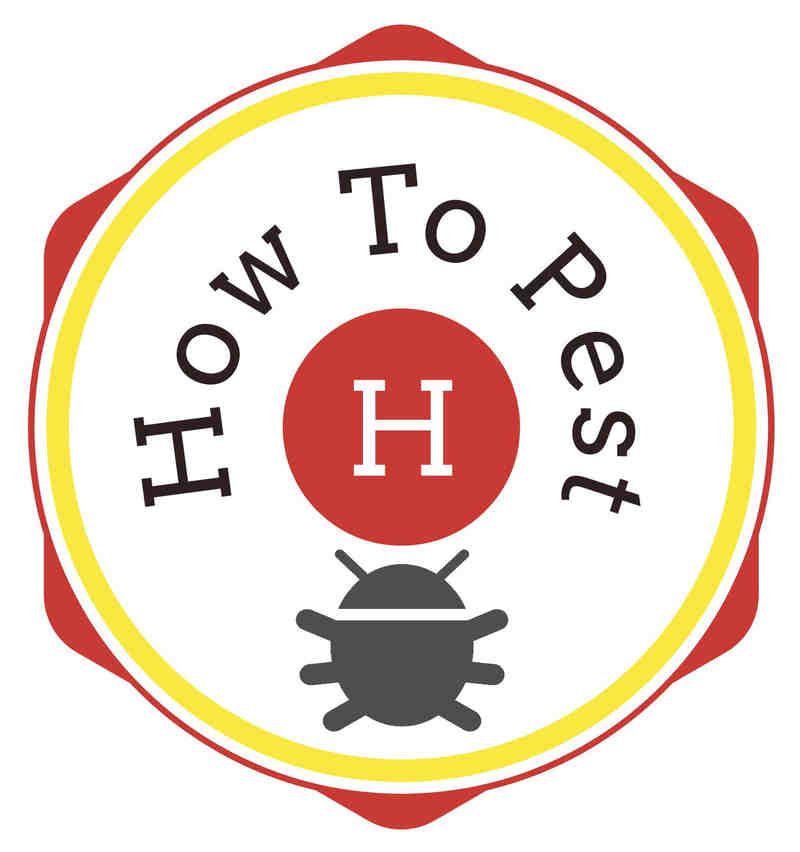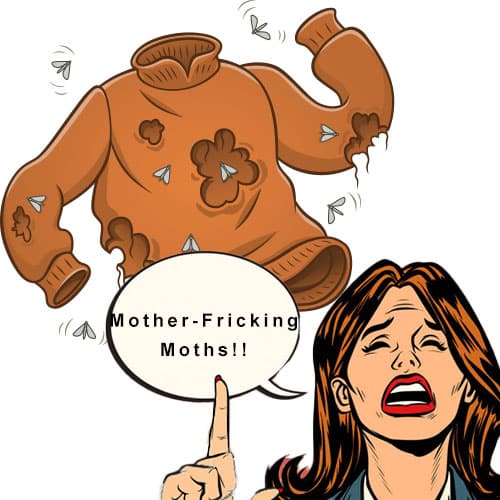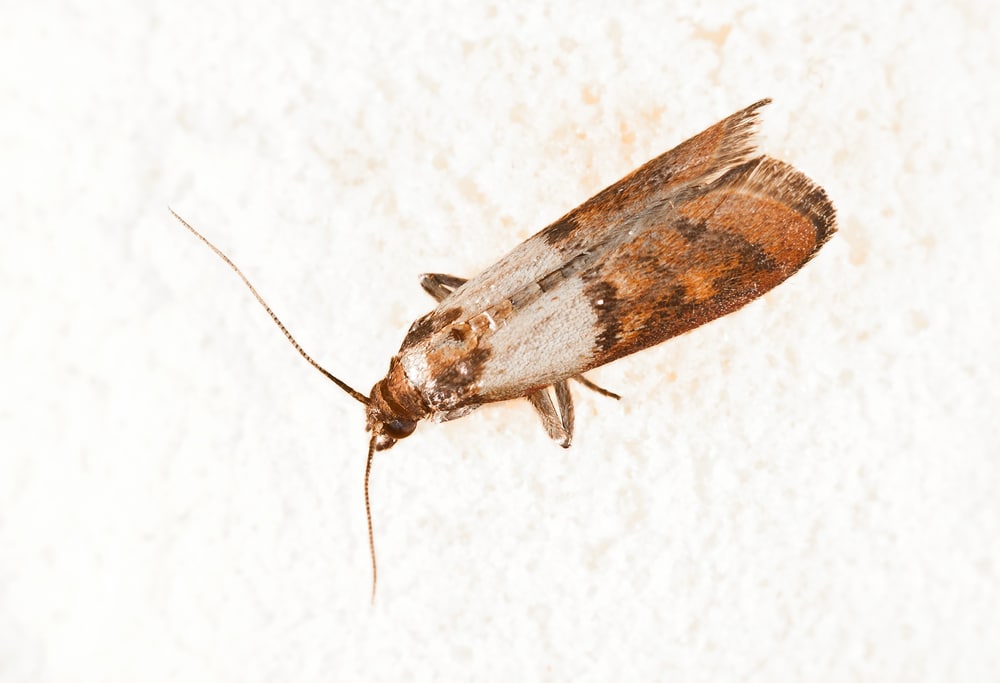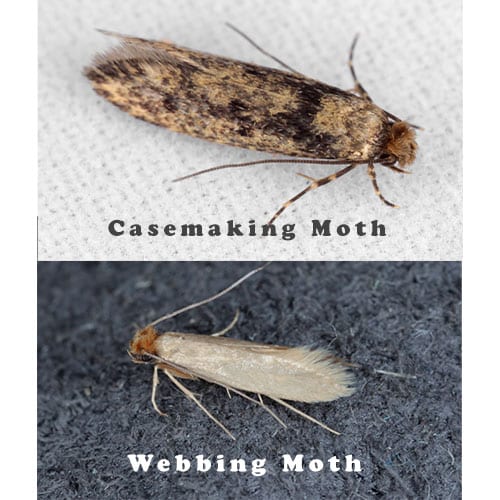Got moths? There are a couple types of moths that like to get comfy and cozy inside your home, pantry moths and clothes moths. Both of these moth-er fricking types of moths can be quite destructive in their own way and this bug blogger is about to give you the low down. So, buckle up and get ready for everything you ever wanted to know about pantry and clothes moths but were afraid to ask.
Where are you most likely going to find Pantry and Clothes Moths?
Pantry Moths: I am certain you will be shocked to learn that pantry moths, aka Indian meal moths, if you want to get fancy, like to hang out in your kitchen, and more specifically inside your cupboards and pantry, hence the name. Since the pantry is where the objects of their affection are stored, it should come as no surprise that is where they’d want to be. Proud carbo-holics, they seek out grains, pasta, flour, the Lucky Charms cereal you’ve been hiding from your kids, and basically any other type of product that ultimately turns to sugar.
Clothes Moths: You guessed it. Clothes moths love, love, love clothes. But, it isn’t because they have a wicked fashion sense, it is because they want to eat them. All those beautiful, stylish, trendy pieces that you just had to have, well, they want to eat them. And given the chance, they will. There are two types of clothes moths that would love to feast on your favorite articles of clothing: the webbing moth and casemaking moths. They feed on keratin which is a protein that is found in natural fibers and hair. Given that natural fibers include things like silk, leather, wool, and animal fur, this means that your closet is their perfect oasis.
What is the difference between Pantry Moths and Clothes Moths?
Pantry Moths: These moths are small with a yellow-gray color on the upper part of their wings, a black band in the middle of their wings and bronze or dark gray-colored lower half. The wingspan stretches to an impressive 5/8 of an inch.
Clothes Moths: Both types of clothes moths measure less than a ½ inch long. The main defining characteristic between the webbing and casemaking moths is their distinct coloring. Webbing moths are a solid grayish/white in color while their fellow fabric-loving friends, the casemaking moths, have darker brown or gray spots on their wings.
How can you tell if you have an infestation on your hands?
Pantry Moths: A pantry moth infestation is easy to identify, and it usually happens pretty quickly, that is, if you are in your pantry using your panty products. Noticing larvae or adult moths in your dry ingredients is the first sign. They sure know how to put a damper on all that baking you wanted to do.
Clothes Moths: Unfortunately, given that clothes moths are so small, realizing you have an infestation will likely take longer. Even more unfortunate is the fact that you probably won’t notice there’s an infestation until you find bites out of your favorite shirt or if you happen to see clothes moth mamas and daddies flying around the closet. Finding their silken cocoons tucked away in the depths of your closet is also an infestation indicator, but given the “depths of your closet” part, that is not an easy thing to find.
What are the lifecycles of pantry moths and clothes moths?
Pantry Moths: Adult pantry moth mamas lay around 400 eggs that hatch within a week. Once they hatch, they get their grub on by eating everything in front of them. They chow down in your pantry for two to three months before moving on to the pupal stage and then their metamorphosis to adult pantry mamas and daddies and then the process starts over again.
Clothes Moths: Clothes moth mamas lay around 300 eggs before keeling over. Yep, you read that right. They give birth, then they die. But, enough about the dead moth mamas, and back to the eggs. It takes around nine days for those eggs to hatch. And once the larvae bust out, they get to work on the fibers that make up your favorite items of clothing. They gnaw away for one to three months before making a silky cocoon that they will chill in for a few weeks before making their way into the world as an adult clothes moth. A fun fact about clothes moths is that while the larvae are super destructive, mature adults don’t have mouths. So weird.
How do you get rid of Pantry Moths and Clothes Moths?
Pantry Moths: Follow these steps to get rid of your pantry moths.
1) Empty your pantry completely and carefully inspect everything you pull out.
2) Toss out all dry goods that are not sealed properly or have been opened.
3) Bust out that vacuum and get to work thoroughly vacuuming the area.
4) Treat the area with a pantry moth pesticide, like the ones found HERE.
5) Don’t restock your pantry right away. Give it a little time to make sure you are free of pantry moths before any restocking happens.
Clothes Moths: Follow these steps to get rid of your clothes moths.
- Remove all clothes and fabrics from the closet. Yes, ALL of them.
- Remove all furnishings from your closet.
- Get out your trusty vacuum cleaner and get busy vacuuming the closet floor, walls, shelving, rods, basically if it is vacuumable, vacuum it.
- Apply a clothes moth insecticide, like the ones found HERE to the cracks and crevices in the closet walls, edges of shelves and baseboards, and finally below any loose carpeting, just in case any moths land on these spots in the future.
Moths of any variety are a moth-er fricking pain in the rear, especially when they have made their way inside your pantry or closet. Let HowToPest.com help you solve all your moth-er fricking moth problems!
